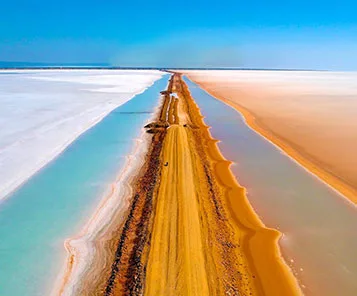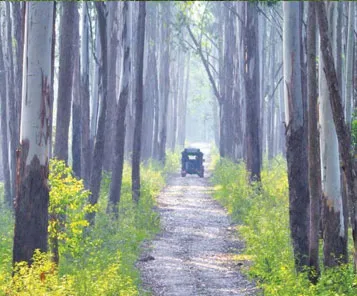Great Rann of Kutch
Welcome to Great Rann of Kutch
Situated in the western state of Gujarat, the Great Rann of Kutch is an overwhelming and magnificent stretch of vast salt marshes that foster rich biodiversity. Measuring to the area of approximately 5,000 square kilometres, it forms a good portion of the greater Rann of Kutch, which presents quite a contrast between bare land and vivid wildlife.
Location and Landscape:
The Great Rann of Kutch is located in the Kutch district of Gujarat, bordering the Thar Desert. It is characterised by its extensive salt flats, which stretch out of sight and have a surreal, otherworldly feel. During the monsoon period, it becomes a shallow wetland area hosting a very large variety of birdlife. Small scrublands with patches of thorny bushes give an element of difference to the landscape, adding to the unique ecosystem of this region.
Flora and Fauna :
The Great Rann of Kutch is worldwide renowned for its wildlife, more particularly as the last stronghold of the Indian wild ass, an endangered species that runs free in this vast area. It is inhabited by a few other mammals like the Indian fox, jackals, and desert cats. In the winters, the migratory birds that include flamingos, pelicans, and cranes also flock to the area. The sparse vegetation comprises mainly of salt-tolerant plants and hardy shrubs that can thrive in the harsh saline conditions.
Historical and Cultural Values :
The Great Rann of Kutch is a cultural treasure for the local communities, particularly the Agariyas, hereditary salt farmers who have mastered their craft over generations. Their lives are intricately connected to the land, with their salt pans reflecting the resilience and survival instincts that have sustained them for centuries. The region is also a vibrant center for traditional fairs and festivals, celebrating the rich culture and traditions of Kutch. Among these, the Rann Utsav stands out as a spectacular annual festival that transforms the barren salt desert into a lively celebration of Kutch’s heritage. Visitors from across the world gather to experience the dazzling array of cultural performances, crafts, music, and local cuisine, all set against the stunning backdrop of the white salt desert under the full moon, making it an unforgettable cultural extravaganza.
Connectivity Options:
● By Air: The nearest airport is at Ahmedabad, about 160 km away. From here one can hire a taxi or take a bus to reach the Little Rann of Kutch.
● By Road: It is well connected by road; frequent bus services and taxi facilities from nearby towns like Dasada, Dhrangadhra, and Patdi are available.
● By Train: The nearest railway station is at Dhrangadhra, about 45 km from the Little Rann of Kutch. One can hire or take taxis and buses from the station to this place.
Best Time to Visit:
The Great Rann of Kutch is at its best during the period from November to March when the weather is milder and migratory birds and other wildlife come alive in this region. The really hot summer months and the monsoon period are best avoided due to extreme temperatures and floods.
Nearby Attractions:

Great Rann of Kutch
This white salt desert is full of beautiful landscapes and cultural experiences. It has to be visited once during the celebration of the Rann Utsav.

Modhera Sun Temple
Beautiful architecture, historical importance, and fame among tourists have all flavoured this ancient temple dedicated to the Sun God.

Wild Ass Sanctuary
Situated in the Little Rann of Kutch, it has been specifically provided for the conservation of the Indian wild ass. It gives very different safari experiences.
Choice of Accommodations
Various options are offered to visitors in the Great Rann of Kutch, which go from environment-friendly resorts and mud huts with ethnic ambience to comfortable hotels in the nearby towns of Dasada and Patdi. Some of these lodges offer professionally guided excursions and cultural programs so that guests can soak in the local way of life. Advance booking is recommended, particularly during the peak season, for a comfortable stay.




